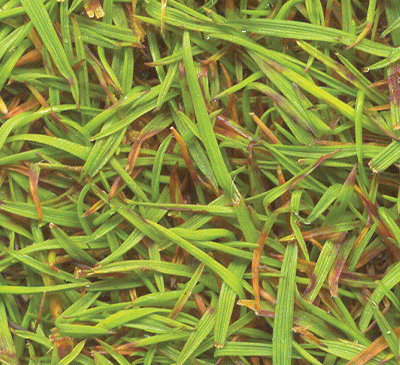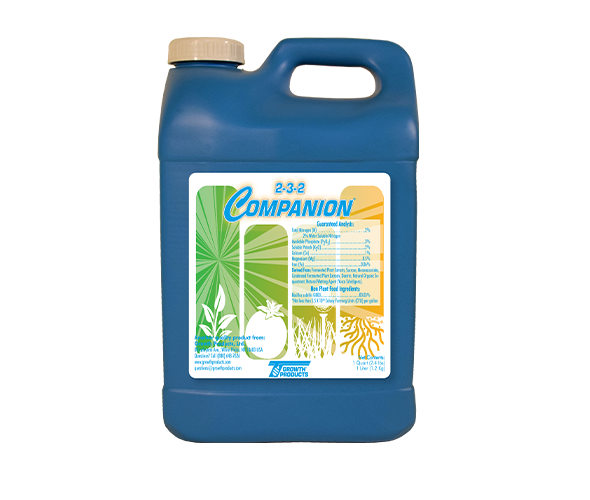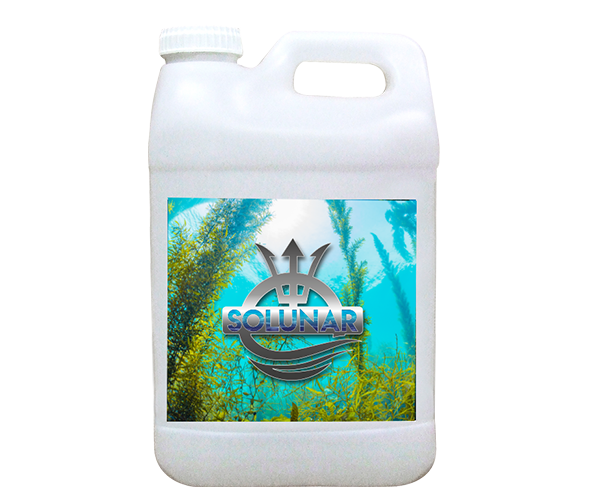The majority of turf diseases are caused by fungal pathogens but some fungi are more strongly pathogenic than others. Many of the common cool season turf diseases are caused by fungi that rely on a weakened plant and therefore reducing disease incidence and severity is often aligned to maintaining a strong sward. With on-going changes to European Legislation relating to pesticide use, it is more important than ever that an integrated approach to disease management is employed and central to this is an understanding that the cultural conditions can limit disease development. Making use of the genetic variation that exists between grass types and cultivars can also minimise disease development through a sward. By managing rootzone quality and using weather information services, it can also be possible to pre-empt disease outbreaks and plan an efficient integrated management strategy.
Pathogen: Mostly Drechslera sp.
Susceptible Species: Many turfgrass species can be affected, but it is mostly a concern on Ryegrass in winter sports.
Although not a cause of major loss of sward coverage, Leaf Spot is nonetheless a concern of football and rugby pitches where it can weaken and thin out a sward that is already under pressure through high levels of use and/or other diseases.
A wet leaf is required for infection to occur, therefore removal of dew and irrigation water in spring and autumn (or whenever evapotranspiration rates are low) via brushing or fans should be carried out to prevent symptoms developing.
The use of a variety of cultivars and species can be useful in reducing damage as the various fungi that cause Leaf Spot can be host-specific. The greater the variety, the lower the potential severity of the outbreak. The crown of plants are sometimes infected and the plant rots leading to ‘Melting Out’.
Cultural & Chemical Prevention:
Shade, humidity and leaf wetness are key to leaf spot development, so limiting shade and maintaining air flow over the sward can significantly reduce outbreaks. This can be through lighting rigs and fans in stadia or tree removal/thinning on training grounds and lower league venues. Removal of dew every time it forms (even multiple times per day) will reduce disease.
A cultural programme of selected thinning of the sward through verticutting and raking to maximise airflow around the leaf is important. Maintaining a sward that is open enough to allow airflow, yet dense enough to withstand wear can be a difficult balance and must be managed through both cultural work and nutrition.
Many minor outbreaks can simply be allowed to grow-out and an application of targetted nutrition can be enough to gently boost growth to grow out the disease without causing excess, soft growth.
Fungicide Only Options
Curative:
- Tebuconazole + Trifloxystrobin (Fortitude)
Preventative:
- Azoxystrobin (Phloem)
- Tebuconazole + Trifloxystrobin (Fortitude)
- Fludioxonil (Emblem)
- Pyraclostrobin (Orbit TL)
Fungicide Tank Mixes
- 1l/ha Fortitude+ 30l/ha X-Xtra Iron
- 25kg/ha Orbit TL + 10l/ha Fulvic Acid
- 500g/ha Phloem + 30l/ha Cal-Mag Max
- 3l/ha Emblem + 4l/ha TKO Phosphite + 7l/ha SAR Activator SA

Example of Leaf Spot
Symptoms
Small spots on the leaf will begin to form and these will often have a dark brown border on the outside edge. Symptoms are often first seen in shaded areas and can steadily spread when conditions are conducive if left unchecked. Overall appearance of the turf can be pale and weak with a slow decline over a number of weeks.

Leaf Spot
Milder, damp weather brings on disease development. The dark brown periphery of this lesion is characteristic of Leaf Spot.
Although it will not spread rapidly and destroy large amounts of turf, early treatment and containment of the disease will maintain a full sward coverage and high quality appearance.
Non-Pesticidal Leaf Spot Prevention:
In situations where budgets and staff levels are low an application of a dew dispersant such as AquaRapido can be very effective in keeping the leaf dry and free from infection.
The use of biostimulants such as Essential, BioRefine, Companion and Solunar alleviate stress from plants and can be the difference between infection or disease-free swards. Maintaining a balanced nutritional programme to maintain a clipping yield suitable for the levels of play on your pitch will be of huge benefit.
Silicon products such as Green Speed Si and phosphites (TKO Phosphite) have also been found reduce infection rates.







